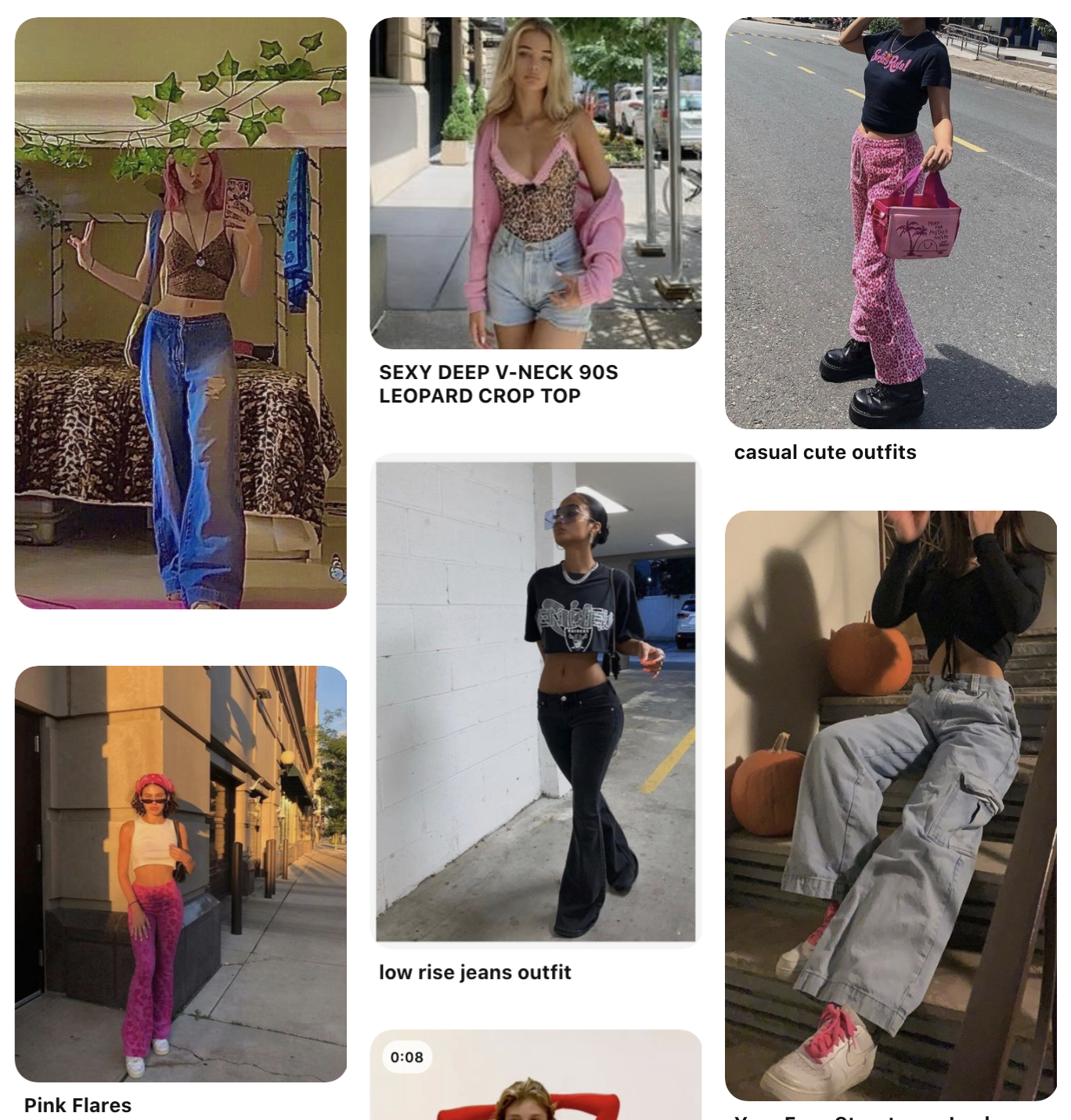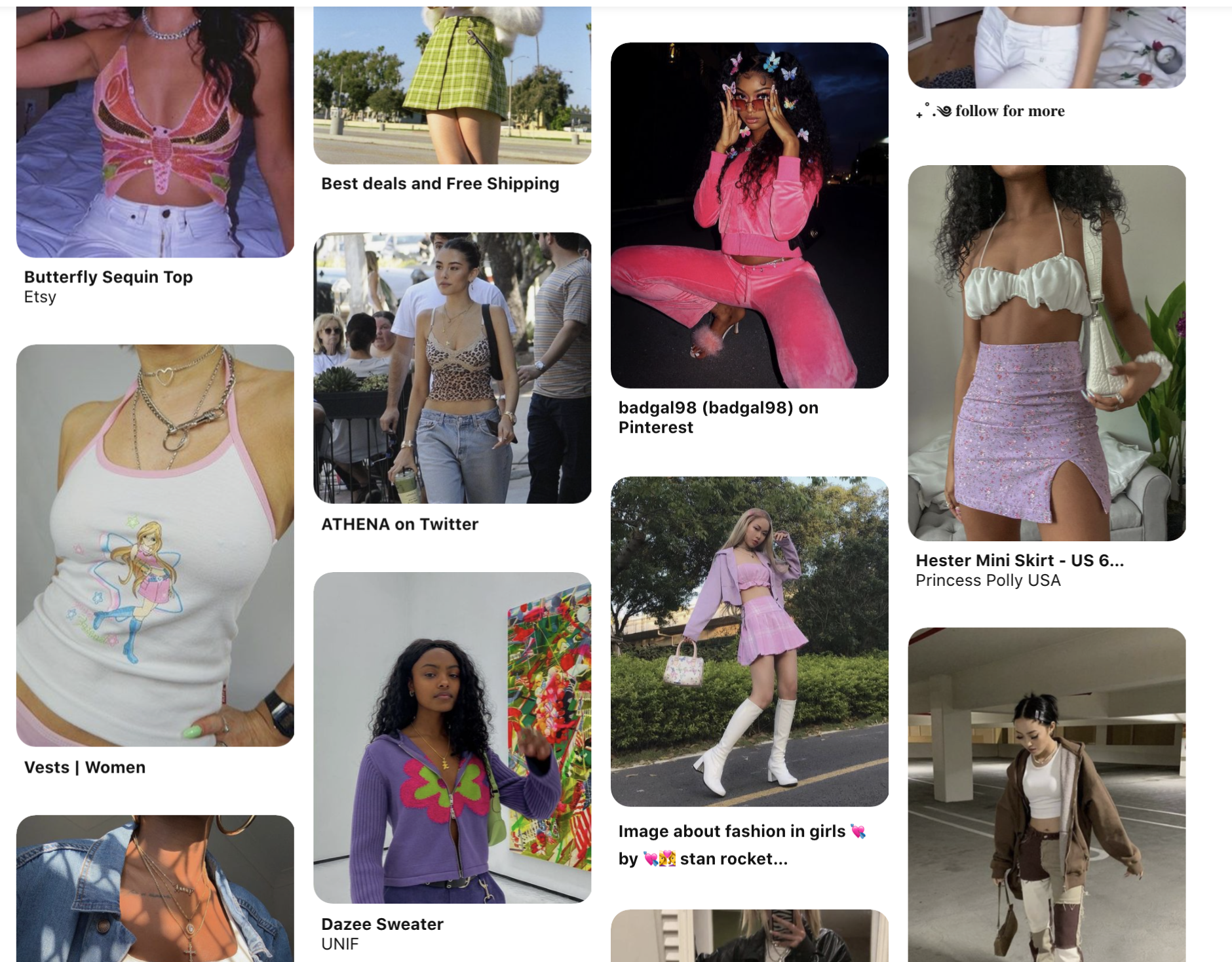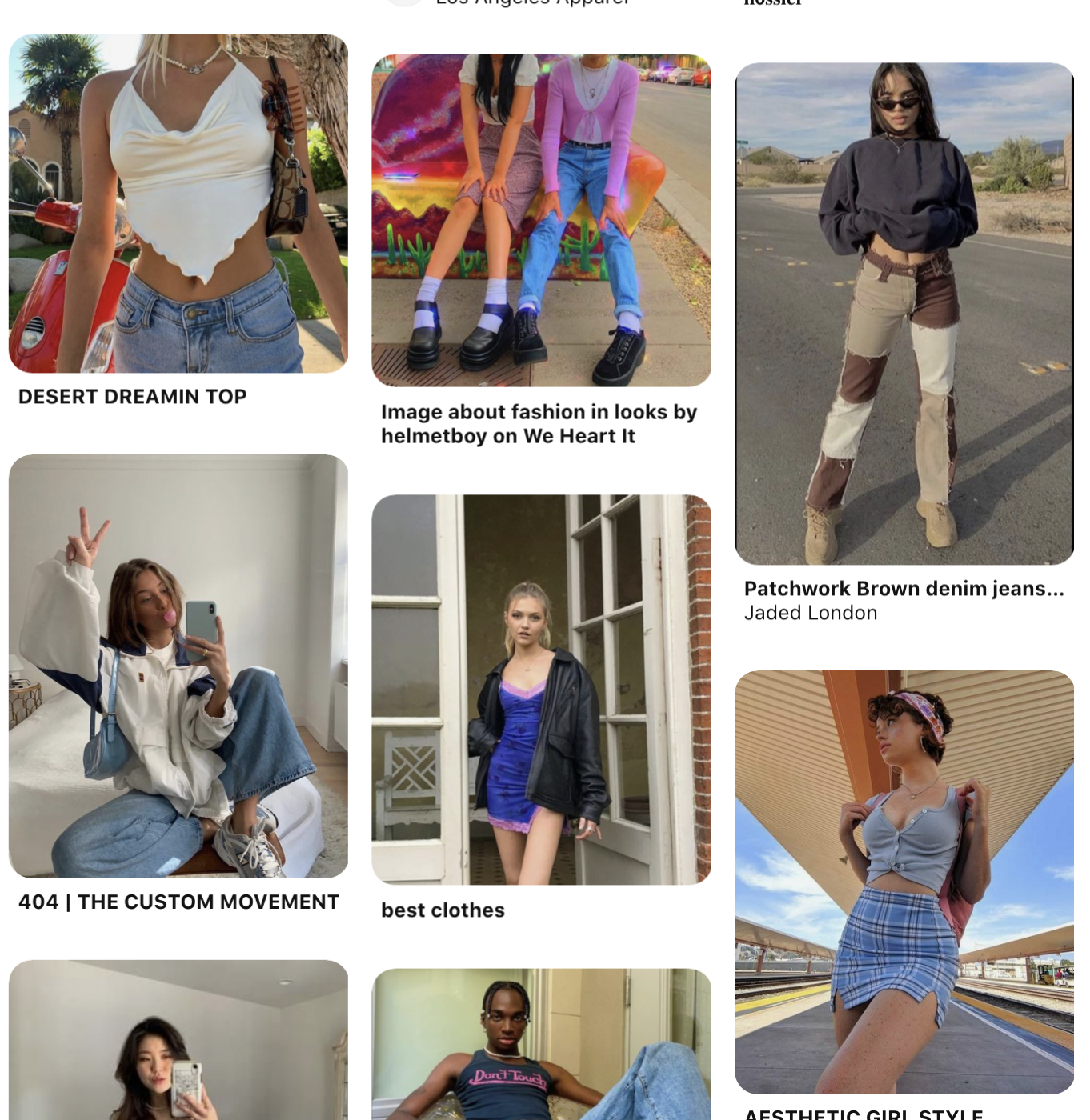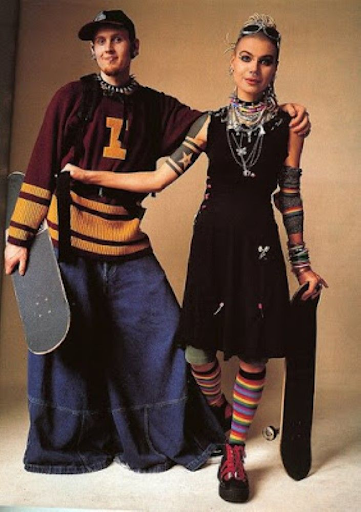Will the Real “Y2K” Please Stand Up?
In the past few years the styles of the early 2000s have been making a resurgence in the fashion world. The term “Y2K” is one of the most-searched words on Pinterest and Depop, but is the style really what we think it is?
Y2K is not simply synonymous with the fashion of the early 2000s. There were so many different styles, subcultures, and genres that it is impossible to encompass a ten year fashion period with just one word. Like any decade, the most prominent and oftentimes mainstream trends are those that the period becomes known for (like neon and scrunchies in the 80s or Converse and leather jackets in the 50s). But with the 2000s, Y2K was just one specific style-- and it wasn’t slip tops and mini skirts.
Today when most talk about Y2K, they mean the trends that have come back and are popular today (that in fact conflate many trends of the 60s, 70s, and 90s). When looking at Y2K style outfits today you’ll often find pink and purple tank tops, corsets, and flared statement pants inspired by Mean Girls or Lizzie McGuire.
Screenshot of Pinterest when searching “Y2K Fashion”
Y2K fashion actually comes from the late 1990s when people were anticipating the “new millennium”. Y2K itself stands for “Year 2000”. The 2000s was thought to be a new age of technology and innovation. Similar to the 1960s when computers were becoming more popular and accessible, TV, movies, and the fashion world imagined what this new era would look like (think The Jetsons). Latex and lamé silvers, purples, and greens make up the exaggerated futuristic shapes and ensembles of real Y2K. Subcultures like “Cyber Punk” and “Rave fashion” more accurately describe Y2K’s style than the Paris Hilton-esque ones we see on social media.
Cyber Punk was a style that incorporated technology into fashion. Cyber Punk took inspiration from both Japanese street style (á la Fruits Magazine) and R&B music video fashion by Black artists (like “No Scrubs'' by TLC and “He Wasn’t Man Enough” by Toni Braxton, which were then followed by music videos by Britney Spears and The Spice Girls). After the world was introduced to the futuristic fashion of Cyber Punk through the music industry, we began to see aspects of the style in more mainstream and mass-produced catalogue fashion. Later, brands like Delia’s and MoXie used similar fabrics and shapes taken from Cyber Punk in their collections making the style recognizable to all.
Raves, which are organized dance parties and festivals featuring electronic music and DJs, began growing in popularity in the late 90s and became the underground scene for teenagers and young adults in the early 2000s. Raves are known for their extreme and experimental fashion full of bright colors, loud and oversized accessories, platform shoes, color blocking, and extravagant makeup and hairstyles. Wide leg JNCO jeans with a million pockets and zippers paired with either oversized or micro graphic tees and a pair of platform sneakers was the ultimate rave kid look. And while this style isn’t quite back yet it should be very soon, so invest in your pair of XXL jeans now. In the 2000s, dyed hair and spiky hairstyles became more popular to flaunt in everyday life, many rave kids began strutting their outfits and hairstyles not just in forests at 2:00 in the morning but to school or the mall.
With all of this said, most of what we know of Y2K fashion comes from Black creatives and designers. R&B and Hip Hop music, and their Black artists, are to thank for most of the cultural trends of the early 2000s. But then again, when haven’t Black people been at the beginning of every cultural movement? Trendsetters like Beyoncé, Aaliyah, or Janet Jackson were doing everything that the early 2000s is known for before celebrities like Britney Spears or Paris Hilton, who are credited as the Y2K icons the today, ever were.
Not only was Y2K fashion popular in the R&B music industry, but Afrofuturism began making waves in the late 1990s. In 1993, the term was coined by Mark Dery to define a genre and movement of futuristic and science fiction literature, music, and art inspired with Black history and culture. Afrofuturism fashion incorporated Black streetstyle from Disco fashion trends of the 70s to the present, traditional African fashion, and sci-fi technology into one design. Current artists like Janelle Monet, Beyoncé, and Childish Gambino have all incorporated Afrofuturism into their personal style and performance aesthetic. Patterns, gravity defying structure, and bold colors began moving from Afrofuturist designers to Black musicians to then finally mainstream celebrities pop artists. Afrofuturism is fluid, it is both of the past and the present, clearly an inspiration for Y2K.
Solange performing on Saturday Night Live
Not only is Y2K fashion often misrepresented today, many don’t know the style’s roots and originators. It wasn’t Lindsay Lohan or Nicole Ricci who created the iconic style (in fact they didn’t even wear it) but Black creatives imagining a new millenium and that can not be ignored.













